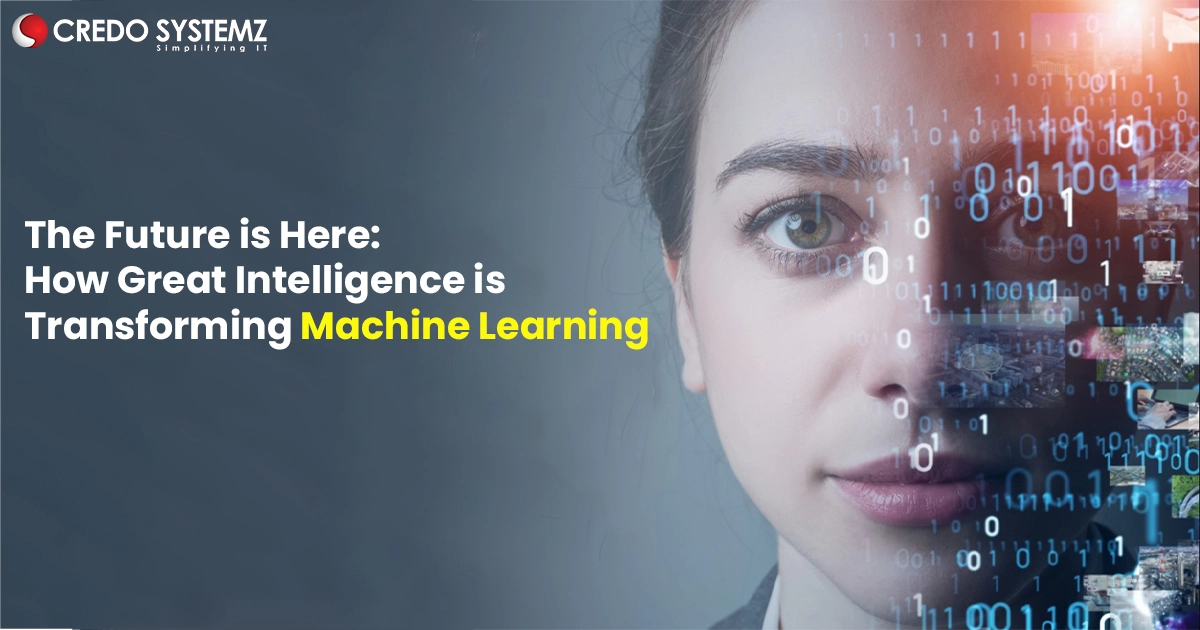
Introduction
In this digital era, AI has emerged as a game-changer, revolutionizing the way we interact with technology and transforming various industries. From self-driving cars to virtual assistants, AI has become an integral part of our everyday lives. This article explores the limitless possibilities and potential of AI and ML. Let’s uncover the latest advancements, and discover how machine learning is propelling us. Get ready to explore the extraordinary power of AI.
Basics of Machine Learning
Machine learning, a subset of AI, is a field of study that focuses on developing algorithms and models. It enables computers to learn and make predictions or decisions. It involves training computers to recognize patterns and make data-driven predictions. At its core, machine learning is about automating tasks and improving efficiency by leveraging the power of data and algorithms.
Machine learning algorithms fall into two categories:
- Supervised learning,
- Unsupervised learning.
Supervised learning algorithms are trained on labeled data to make predictions or decisions. Unsupervised learning algorithms analyze unlabeled data to find patterns, relationships, or clusters. Machine learning algorithms rely on various techniques to solve complex problems such as
- Regression
- Classification
- Clustering
- Reinforcement learning
Real-Life Applications of Machine Learning
Virtual Assistants
Virtual assistants like Apple’s Siri, Amazon’s Alexa, and Google Assistant have become an integral part of our daily lives. Machine learning enables virtual assistants to learn from user interactions that continuously improves the performance.
Recommendation Systems
Recommendation systems analyze user preferences, browsing history, and purchase patterns to generate personalized recommendations. By leveraging machine learning, these systems can predict user preferences and make accurate recommendations. It enhances the user experience and increases customer satisfaction.
Image and Speech Recognition
Machine learning has made significant advancements in image and speech recognition. It enables applications such as facial recognition, object detection, and speech-to-text conversion. Machine learning algorithms can process and analyze large amounts of data. It allows for accurate recognition and interpretation.

The Benefits of Implementing Machine Learning Technology
Automation and Efficiency
Machine learning automates repetitive tasks, eliminating human error and improving overall efficiency. By automating processes, businesses can save time, reduce costs, and allocate resources effectively.
Improved Decision-Making
Machine learning algorithms can analyze vast amounts of data, identify patterns, and make data-driven predictions. This enables businesses to make informed decisions, optimize processes, and achieve better outcomes.
Personalization
Machine learning enables businesses to offer personalized experiences to their customers. By analyzing customer data and behavior, businesses can tailor their products, services, and marketing strategies.
Enhanced Security
Machine learning algorithms can detect anomalies and patterns that may indicate security breaches or fraudulent activities. By continuously monitoring and analyzing data, machine learning technology can help prevent potential threats, enhance overall security.
Scalability
Machine learning algorithms can scale to handle large amounts of data and complex problems. This makes machine learning technology suitable for businesses of all sizes, from startups to large enterprises.
The Future of Machine Learning and AI
Explainable AI
As machine learning algorithms become more complex, there is a growing need for explainable AI. Researchers are working towards developing algorithms that provide clear explanations for their decisions. It enables better transparency and accountability.
Reinforcement Learning
Reinforcement learning, a branch of machine learning, focuses on training algorithms to make sequential decisions and learn through trial and error. This approach has shown promising results in areas such as robotics and game playing.
Edge Computing
Edge computing refers to the processing and analyzing of data at the edge of the network. With the proliferation of IoT devices, edge computing is becoming increasingly important. Machine Learning Training algorithms can enable faster response times, reduced latency, and improved privacy.
Hybrid Models
The future of machine learning and AI lies in the development of hybrid models. It combines the strengths of different learning approaches. For example, combining supervised and unsupervised learning can leverage the power of labeled and unlabeled data. It leads to more accurate and robust models.
Industries that are Leading the Way in Implementing Machine LearningHealthcare
The healthcare industry is at the forefront of implementing machine learning technology. From diagnosing diseases to developing personalized treatment plans, machine learning has the potential to revolutionize patient care.
Finance
Financial institutions use machine learning algorithms for fraud detection, risk assessment, and algorithmic trading. Machine learning enables financial institutions to analyze vast amounts of data and make real-time decisions.
E-commerce
E-commerce platforms use machine learning algorithms to offer personalized recommendations, optimize pricing strategies, and improve customer experience. Machine learning is transforming the way we shop online.
Manufacturing
Machine learning is transforming the manufacturing industry by improving production efficiency, predictive maintenance, and quality control. By analyzing sensor data, machine learning algorithms can identify patterns and optimize manufacturing processes.
Careers in Machine Learning and AI
The rapid growth of machine learning and AI has created a high demand for professionals with expertise in these fields. Careers in machine learning and AI are diverse and offer exciting opportunities. Some of the popular job roles of machine
learning include:Machine Learning Engineer
Machine learning engineers develop and implement machine learning algorithms and models. They work on data preprocessing, feature engineering, model training, and deployment.
Data ScientistData scientists analyze and interpret complex data sets to extract insights and make data-driven decisions. They use machine learning algorithms and statistical techniques to solve business problems.
AI Researcher
AI researchers focus on advancing the field of AI through research and development. They explore new algorithms, techniques, and applications to push the boundaries of AI.
Data Engineer
Data engineers are responsible for building and maintaining the infrastructure for data storage, processing, and analysis. They ensure data availability and reliability.
Tips for Getting Started with Machine Learning
Learn the Basics of Machine learning
Start by understanding the fundamentals of machine learning, including different algorithms, techniques, and evaluation metrics. Join Credo Systemz Machine Learning Training for professional support. They provide a solid foundation from scratch.
Practice with Real-World Data
Apply machine learning techniques to real-world datasets to gain hands-on experience. Credo Systemz Machine Learning Course offers hands-on training using Real world projects.
Build a Portfolio
Create projects that showcase your machine learning skills. This can include developing predictive models, building recommendation systems, or solving specific business problems.
Stay UpdatedMachine learning is a rapidly evolving field. Stay updated with the latest advancements, research papers, and industry trends. Join online communities to stay connected with the machine learning community.
Conclusion
Machine learning and AI have unleashed a new era of innovation and automation. From healthcare to finance, machine learning algorithms are transforming industries, and improving decision-making. The future of machine learning and AI is promising, with advancements in explainable
